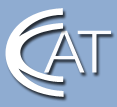Explore high-paying careers in clean, high-tech Connecticut manufacturing.

Educators: Externships
Work-based Learning Projects for the Classroom
Title: Mathematical Analysis of a Candy Lab
Name of NGM Educator: Ralph Minaya, Math Teacher Academy of Engineering and Green Technology, Hartford High School |
Name of Host Company: Hamilton Sundstrand, United Technologies Corporation |
Grade Level: 9th - 12th (secondary) |
Student Work Types: Journal, data analysis, final report, presentation |
Task Abstract: I will present a initial challenge to students, The Candy Lab, as an introduction of the concepts and skills (Mean, Median, Mode, Standard Deviation, Normal Distribution, among others) they will learn in order to do the Hamilton Sundstrand Project. They will use Microsoft Excel to perform the data analyses. Teacher will show students how to enter formulas in the spreadsheet. Students will have to show proficiency on these skills before going forward with the work-based project. |
Task Objectives:
|
Esssential Understandings/Questions:
Assessments
|
Task Description: Students will write a report about “Fin and the Fin Forming Process” as applied in the aerospace industry. They will describe the different parts of a fin. They will explain the different applications, and production process (how they are made). They will investigate what are the leading companies in the production of heat exchangers in the country and in the state of Connecticut. Students will work in groups of 4 or 5. Students will be provided with templates developed during the summer externship, in order that they can learn how to improve quality control through the use of technology (Minitab, Excel, and PowerPoint). Students will follow directions as to how to input data into the Statistical Process Control (SPC) Software to calculate Cp and Cpk indices, mean, standard deviation, control limits, among others before making their own inferences about process outcome. They will only make recommendations for a few fin height items. Students will prepare a final report explaining the steps taken to make the different recommendations. They will present their findings to the class with a PowerPoint presentation |
Resources Required: students must have a computer work station [with Internet connection] with MS Excel software and Minitab, operating procedures (Standard Work) listing the steps to be follow in order to perform the data analysis accurately, and email account. All works generated by the students will be delivered electronically to the teacher, and printing will not be allowed throughout the project due to the fact that we are a green academy. |
Prior Learning Required: Previous experience with MS Excel spreadsheet and MS PowerPoint is highly desirable. Students must have a basic understanding of basic statistics, e.g., mean, median, mode, histograms, tolerance, and standard deviation, among others. |
| Context within which work is produced:
The Fin Forming project is to be completed in a classroom setting equipped with the technology mentioned above. The teaching strategy must be such that students must be able to switch between different hands on activities, brain storming, group discussion, teacher/student, and student/student interaction to maintain engagement. A project of this magnitude would take six school days in order to be implemented efficiently based on the urban setting environment we are in. It is assumed that students have no knowledge of MS Excel or Minitab, and that students have no knowledge of Statistical Process Control. |
Individual or Group Work: Most of the project is implemented in a cooperative environment where groups of 4/5 students work together to get the best project outcome. Interaction among the different groups is highly encouraged Even though the team members work together to get the desirable outcome, they all need to submit by email their individual reports (Word document), and data analyses (Excel document) to make sure that they master the desirable skills. Every group will prepare only one final PowerPoint presentation. |
| Special Needs: n/a |
Educator Comments: The intention of the curriculum development project is two folded:1) Expose students to statistical process control so they have an initial experience with data analysis that s value to any employer business when they get into the labor market;2) Provide students with the foundation of basic statistic skills to facilitate the process when they take more advanced course in college. It was a priority for me to get students involved in technology in order to separate them from the traditional way of doing work in the classroom. During this project, and during this school year and years to come, I am requiring from students to submit every assignment electronically. It is just one way to have a better, safer environment, and students enjoy it. |





